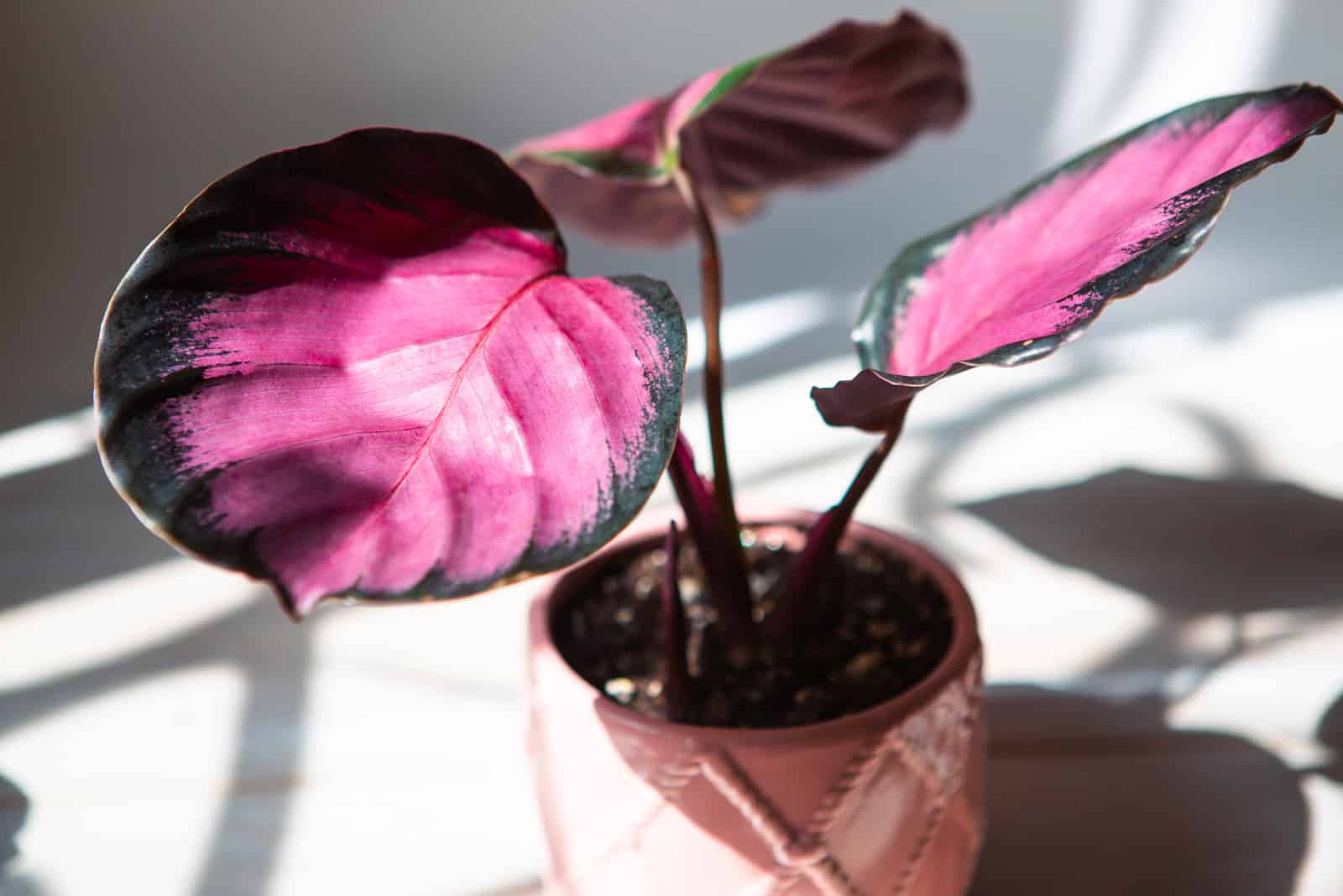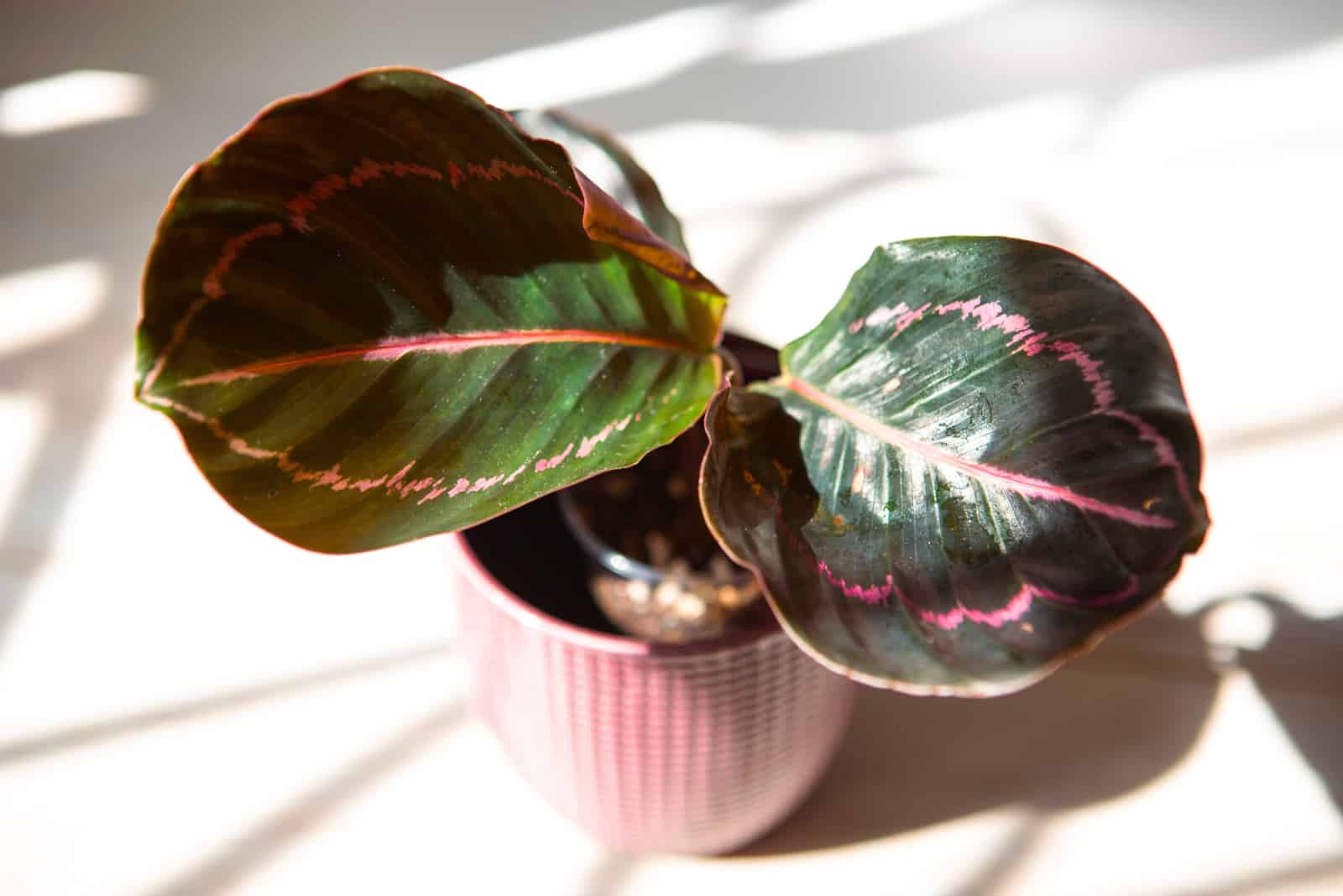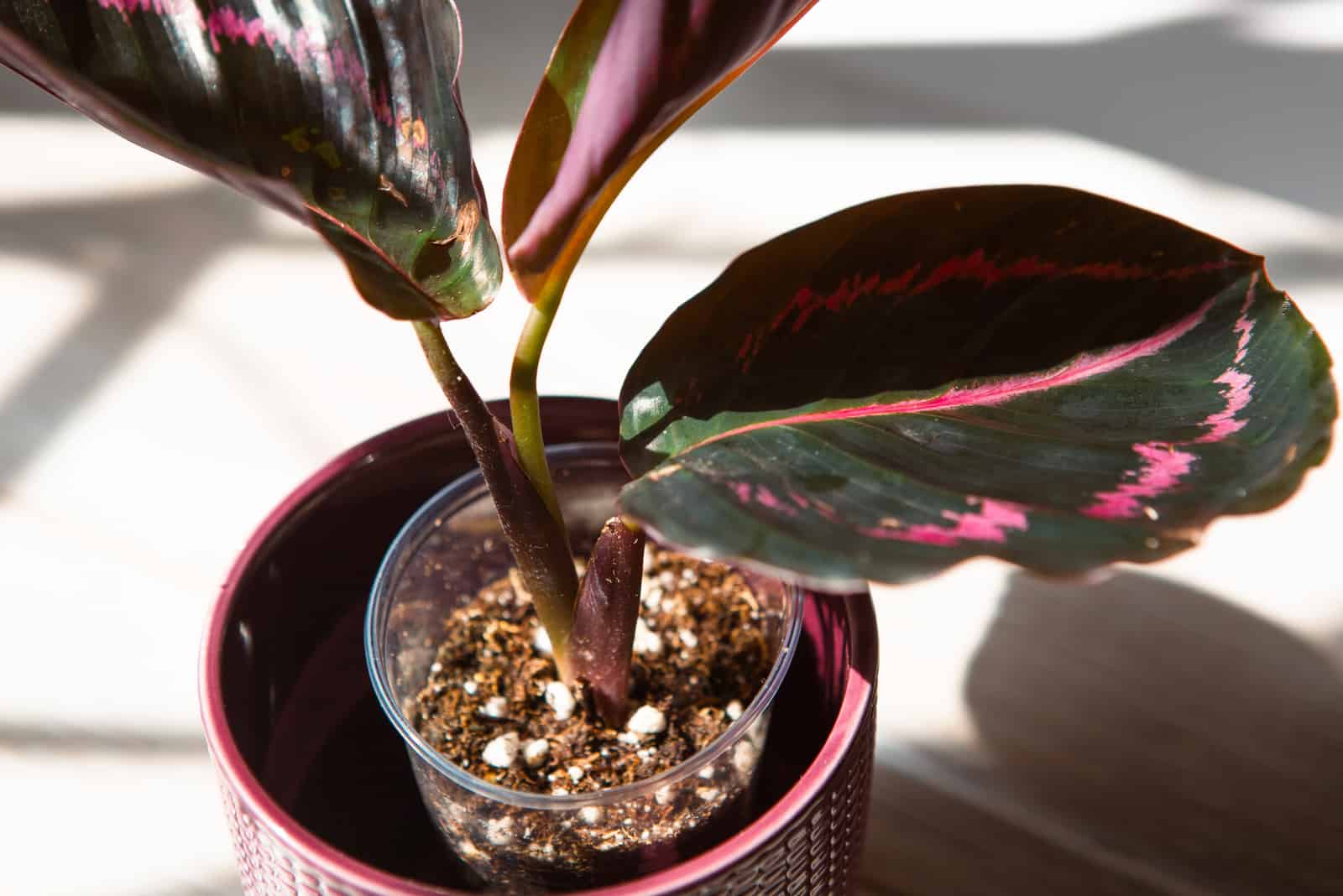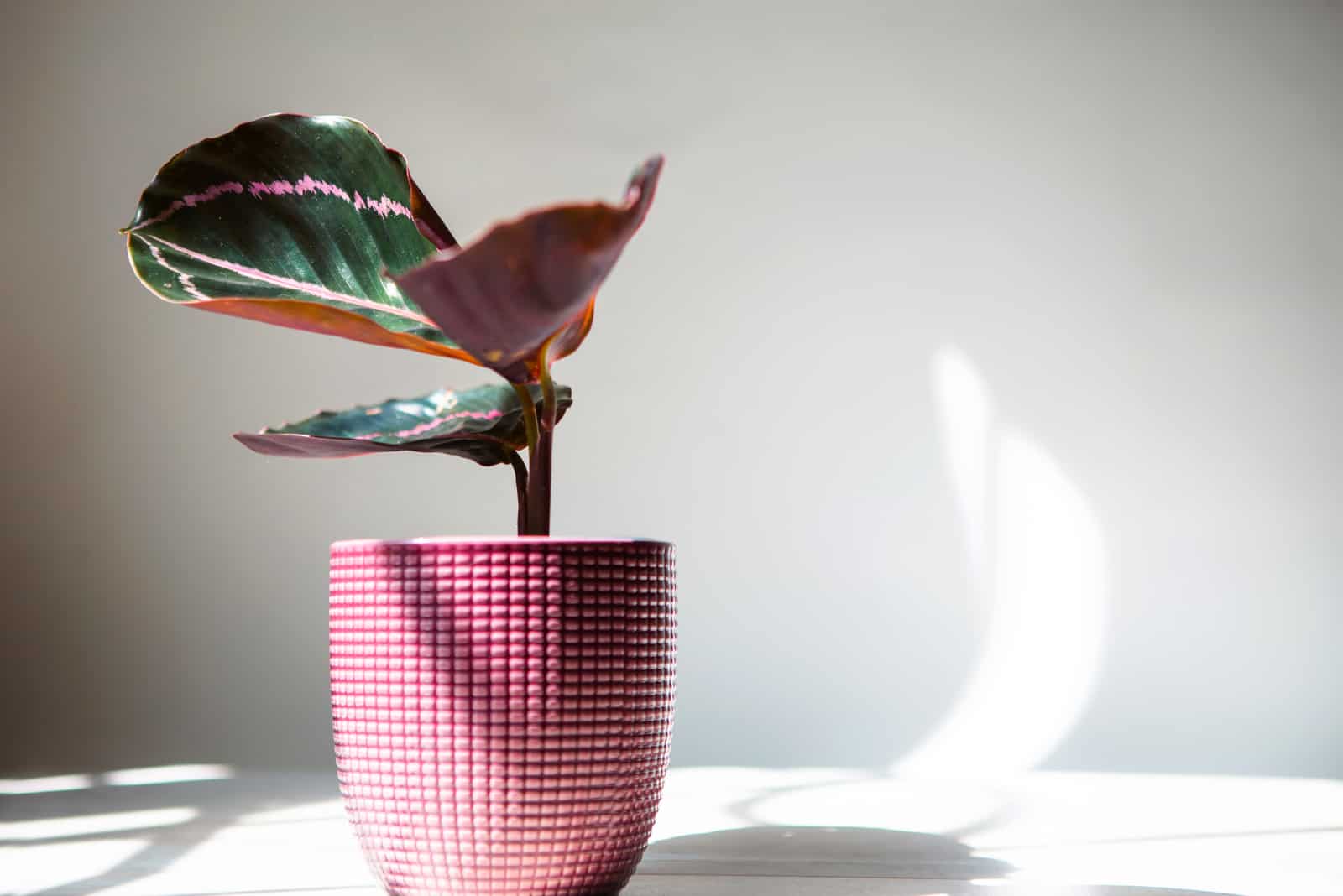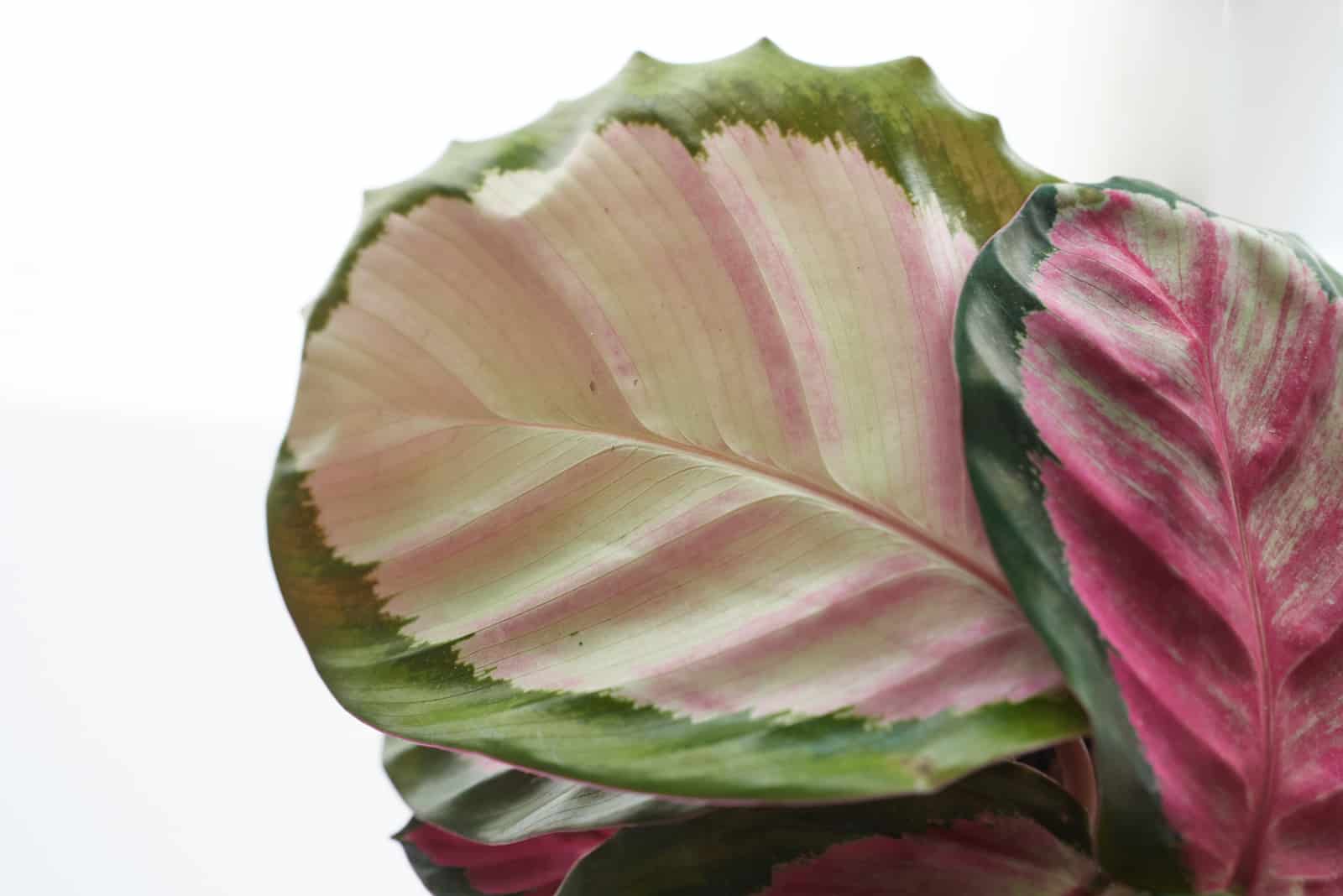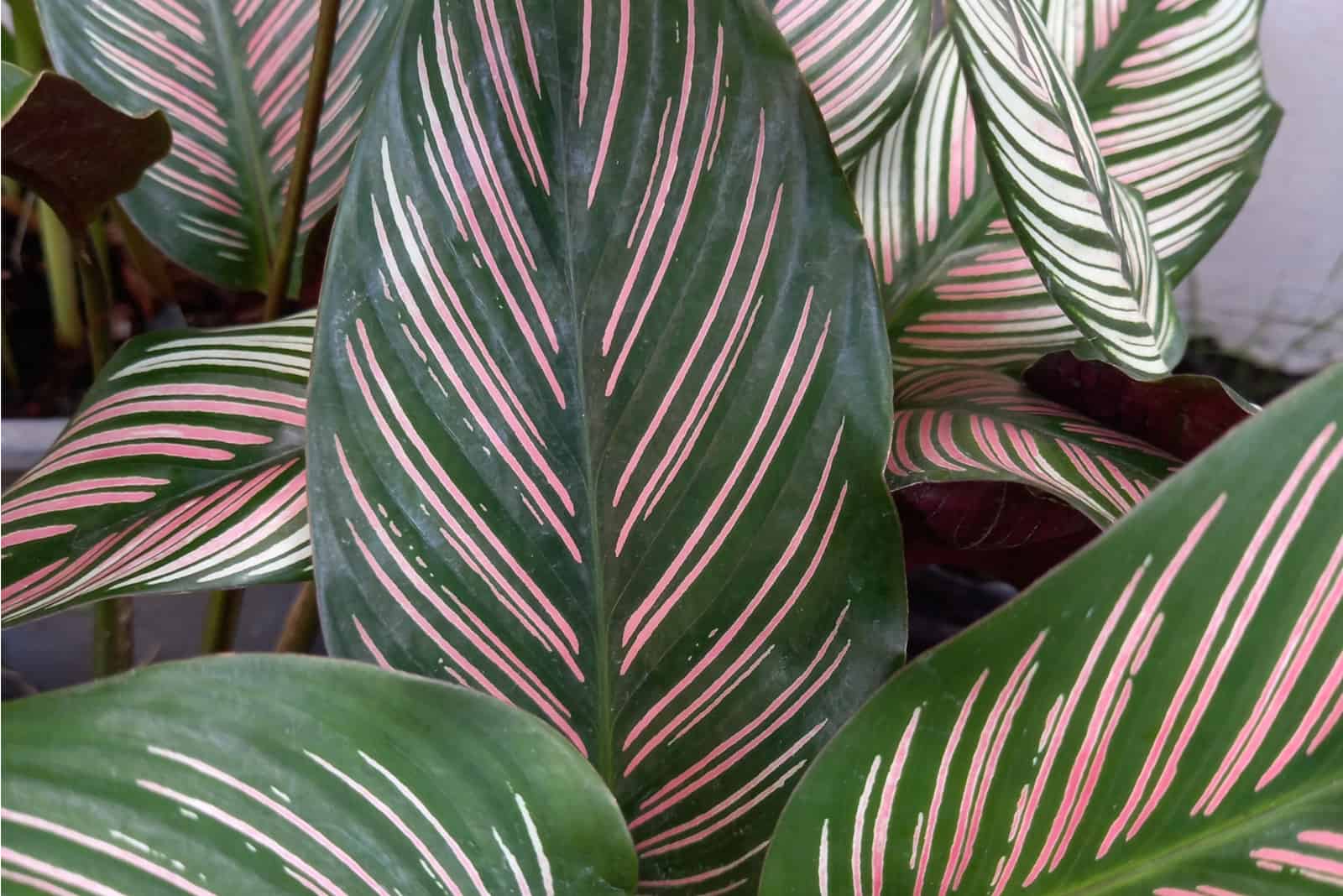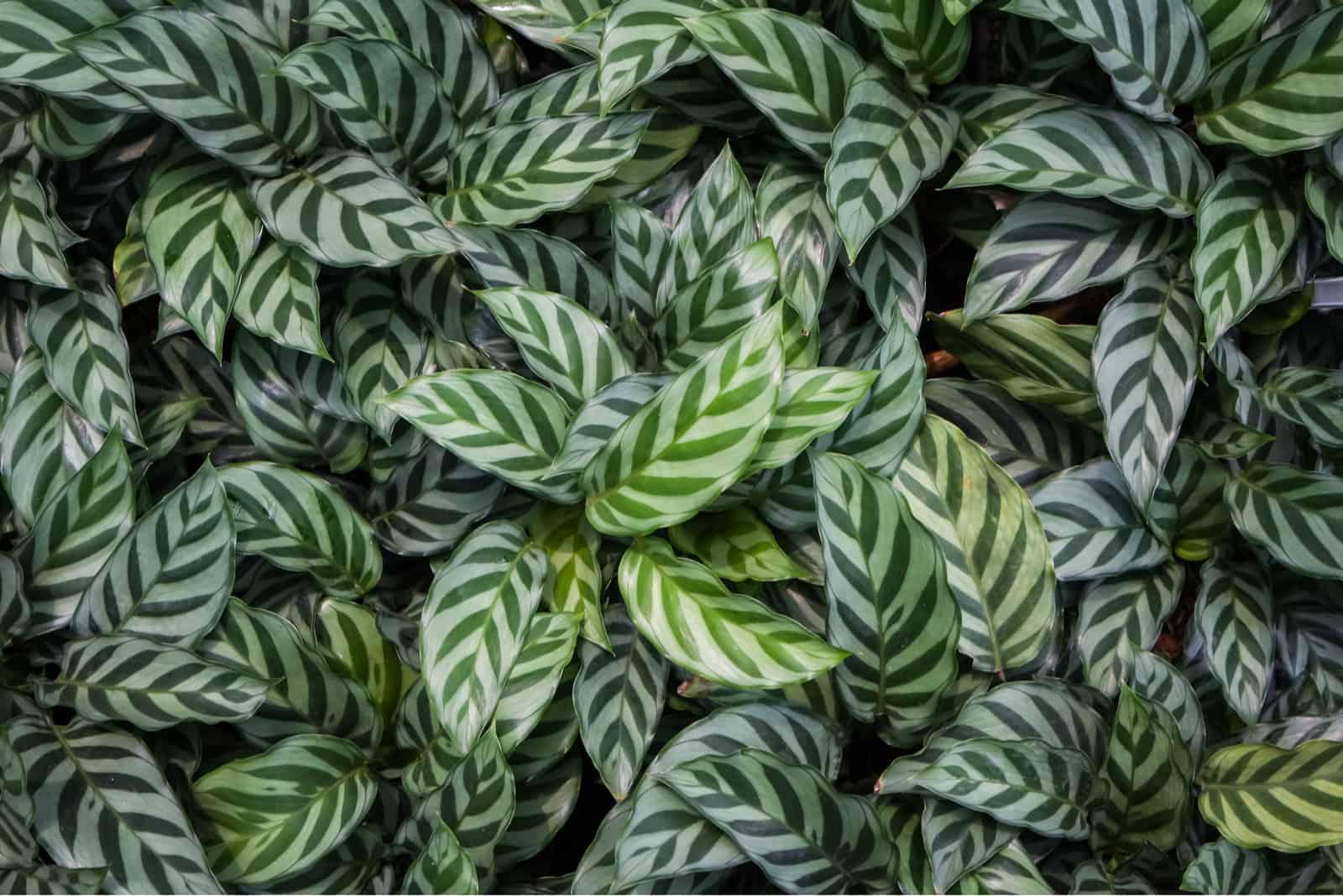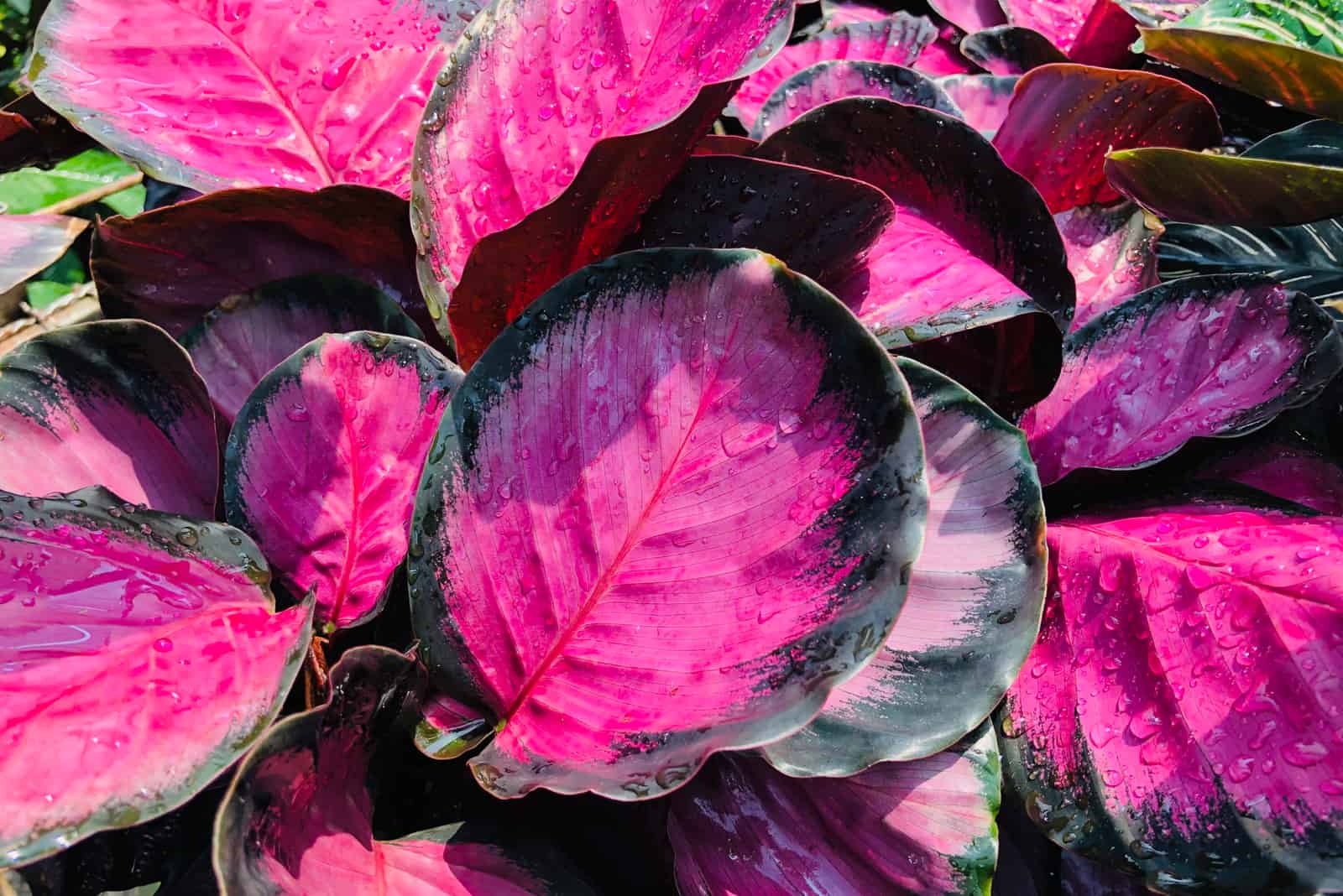Meet Calathea Rosy, a mesmerizing plant that is a true wonder of Mother Nature.
Calathea Roseopicta Rosy, or Rose Painted Calathea, belongs to the Marantaceae flowering plant family found in North America. It is notable for its characteristic foliage, namely clumping, round, dark green ornamental leaves which rim the distinctive purple-to-pink underside.
A summer-bloomer, Calathea Rosy is a prayer plant, so its leaves fold up at dusk and open up at dawn. This beauty would be an excellent adornment for your living room. It is even an air-purifier!
If you’ve never heard of it before, but are intrigued and want to find out how to take care of one, read on to discover everything you need to know and more!
How to Care For Calathea Rosy
Taking care of a Calathea Rosy can be a daunting task if you are new to the world of gardening. However, with some minimal effort and our handy tips, success is all but guaranteed! Here are all the things you should take into consideration when grooming a Calathea Rosy.
Temperature
As a tropical plant, the Calathea prayer plant favors a warm environment. The average room temperature should range between 65 to 75 degrees Fahrenheit, even though a Calathea Rosy won’t protest too much if it rises to 90-95 degrees, as long as it’s not too high and dry.
However, be sure to avoid cold climate conditions! The lowest temperature should not drop below 60 degrees.
Do not expose it to low or cool temperatures, air-conditioning, drafts, or vents, as this might have a negative impact on Calathea Rosy’s health and growth. Do not forget to take this plant indoors during the winter season.
Sunlight
Catching some sun rays will boost a Calathea Rosy’s growth, but you should avoid placing it in direct sunlight. Too much or too little sunlight will stunt your pet plant’s growth.
Also, direct sunlight will affect its multicolored pattern (known as variegation), because the foliage will fade, wilt, and develop burn marks or brownish leaf tips.
Indirect sunlight for a couple of hours a day is all a Calathea Rosy needs. You can place it in an east or west-facing room with filtered sunlight and it should be fine.
Humidity
Brown spots or curling brown leaf edges can indicate insufficient humidity. A tropical native, Calathea Rosy has a natural inclination for high humidity. Optimal humidity levels (40%-60%) will ensure the plant’s growth and the vividness of its stunning leaves.
Nowadays, it is possible to obtain a plant humidifier that will provide adequate humidity levels. You can also try alternative methods such as misting it 2-3 times a week, placing the plant on a tray with wet pebbles, or moving it to a humid room.
Soil
The ideal soil for prayer plants is well-draining, moisture-retentive, and organic. The best option would be to use a peat-based or coco coir potting mix, mixed with either 1/3 or 1/5 perlite for excess moisture drainage and root rot prevention.
Watering
Watering is an aspect of plant care that gives a real headache to most Rosy owners.
If a Calathea roseopicta could speak, it would ask for moist soil at all times, but not to have its roots soaked in water.
To know if your plant needs watering, inspect its soil. If the soil is pale brown and dry, it is most likely suffering from dehydration. Calathea roseopicta is sensitive to particular water types, so avoid using tap water as it is abundant in minerals. Instead, apply distilled water or rainwater around the plant’s base.
If the plant is in its growing season, apply the “less is more policy.” Provide small amounts of water every two days or when the top of the soil or 2 inches below the surface is dry.
During winter, reduce your watering schedule to once a week or less. Calathea Rosy is dormant in this period of the year and conserves its energy by reducing growth to little or none.
Dark, moist soil with lush leaves suggests that the plant is getting the right amount of water. If you overwater Calathea Rosy, its roots will become soggy and lead to root rot.
Fertilizer
Indoor plants often don’t require fertilizer. However, if you opt for fertilizing, it should be done during the plant growing season. Most fertilizers need to be diluted before use.
Calathea roseopicta will benefit from a slow-release liquid fertilizer. This will provide all the necessary nutrients, such as phosphorus, calcium, magnesium, and potassium – everything even a human needs to stay healthy. Apply the diluted fertilizer to wet soil every 3-6 weeks from early spring to early summer. The fertilizer should be diluted by half.
Do not go overboard with fertilizing, as you might do your plant more harm than good. Also, there is no need to fertilize your plant if you have recently changed its potting soil. Fertilization should be avoided during the fall and winter seasons.
Pruning
If you are worried about Calathea Rosy being a fussy plant, you will definitely love this fact: it does not require any pruning! It is a fast-growing plant, but can reach as little as 40 centimeters and never gets too bushy.
You can prune it to stimulate its growth and remove damaged foliage. When pruning, your pruning tool needs to be sharp enough to avoid the possibility of hurting the plant. Before pruning, clean the cutting surface with a disinfectant such as rubbing alcohol.
Potting
Potting will never become a nuisance with Calathea Rosy.
It is best to repot it once every two years before the growing season.
Check the roots before repotting. If they have started to grow into the drainage holes or peek out of the soil, it’s time you found alternative housing for your plant. You should select a pot that is a few inches bigger than the old one.
Don’t worry if you made a misjudgment and began repotting ahead of schedule. Simply return the plant to the old pot or make other preparations for your Calathea Rosy to adapt to its new home.
Propagating
Having a Calathea Roseopicta as a houseplant is a blessing, and having several will make you feel very lucky indeed!
Combining repotting and propagating will save you precious time by killing two birds with one stone. Plants like the Calathea Rosy can be propagated using the division method.
Follow these steps for successful propagation:
• Have a new nursery pot ready for the new plant.
• Lift the plant in the air to identify roots that are branching off and forming a separate section.
• Choose healthy stems and separate them from the parent plant using a clean, sharp tool.
• Repot the parent plant and pot the stems in the new pot.
Toxicity
Its pink-to-purplish leaves might remind you of the toxic jungle plants you saw in the Indiana Jones movies, but Calathea Rosy is nothing of the sort. Touching the Calathea Rosy will not release a toxic smell or anything dangerous. Nothing bad will happen to you as the plant is not dangerous in any way. It is also pet-friendly.
If you or some of your family members somehow manage to consume it (strange things happen all the time), don’t panic by calling an ambulance or rushing to the ER. The most significant consequence would be temporary mild stomach irritation, and after that you’ll be right as rain.
7 Common Issues with Calathea Rosy
Proper plant care doesn’t mean you will not experience some setbacks along the way. Here are the most common issues with the Calathea Rosy:
Curling Leaves
Curling leaves can be a sign of underwatering or overwatering. As they are opposite ends of the spectrum, you are left with no other choice but to inspect the soil.
Dry soil means the plant is likely thirsty, so water it and give it a couple of hours to recover. If the leaves uncurl in the meantime, adjust your watering schedule.
Wet soil means one of two things: either the plant’s roots are not receiving enough water or they are drowning in it. To allow water to reach the roots, provide aeration by gently poking the soil with a stick. If the roots are dark or black and oozing an unpleasant odor, repot the plant as soon as possible.
Yellow Leaves
Yellow leaves can appear on a Calathea Rosy for a number of reasons. The most common are underwatering, overwatering, overfeeding, underfeeding, excessive sunlight, and the plant being cranky (yes, plants can be cranky).
In case of underwatering or overwatering, apply the same solution as for curling leaves.
Overfeeding or underfeeding is easy to fix. In the case of overfeeding, reduce the amount of fertilizer and flush the soil with distilled water or some rainwater.
Underfeeding suggests your plant is lacking in necessary vitamins and nutrients. Apply the diluted fertilizer to wet soil every 3-6 weeks from early spring to early summer to help the plant to recover.
Direct sunlight can cause the Calathea Rosy’s leaves to turn yellow, stiff, and crispy. Move the plant to a shaded place with enough indirect light.
The plant can get cranky if subjected to moving or repotting. Give it some time to adapt.
Drooping Leaves
As a prayer plant, it is natural for a Calathea Rosy’s leaves to fold up overnight and open up at dawn. If drooping happens irrespective of the time, check for signs of underwatering, overwatering, or low temperature.
We have already provided tips for dealing with underwatering or overwatering under the “Curling Leaves” section. In case of low temperature, ensure that the temperature never drops below 60 degrees Fahrenheit.
Brown Tips
In addition to overexposure to sunlight and water, brown tips might be a sign of toxic mineral build-up.
Minerals not absorbed by the plant become soluble salts and gradually accumulate on the soil surface. They are also found in hard tap water.
To prevent mineral build-up, flush the minerals out of the soil every few months with distilled water or some rainwater.
Foliage with brown tips can be restored, but new foliage should not have brown tips.
Leaf Pattern Loss
Calathea Rosy is recognizable for its decorative patterned leaves, and without them it simply wouldn’t be a Calathea. If you notice pattern loss in your plant, it might be connected to sunlight or under fertilization.
Too much sunlight will make the leaves appear faded. In that case, move the plant somewhere away from direct sunlight.
On the other hand, if the fadeout is a direct result of low light exposure, move the plant somewhere with more light.
If none of these apply, your plant might be suffering from low fertilization. Add a diluted fertilizer every 3-6 weeks and make sure the soil is wet before fertilizing.
Weak Stems
Weak stems do not mean that you need to buy a new plant. They often suggest overwatering or low temperatures.
Inspect the soil to see whether the roots are soggy or the plant is trying to tell you to turn the heating up!
Bug Invasion
A specimen of Calathea Rosy in the midst of a bug invasion will show signs of dotted yellow to brown discoloration. From spider mites to fungus gnats, the Calathea Rosy is a big target for all types of pests and bugs.
The first thing you should do is isolate the plant to prevent the infestation from spreading to other plants. If you have a plant collection, bugs can jump from one plant to another and infest them rapidly.
Second, remove any dead or withering leaves and throw them into the trash.
Third, put the plant in the sink or a bathtub, and give it a nice, warm shower. Control the water pressure. When finished, give the leaves and stems a thorough wipe.
Fourth, get an insecticidal soap and spray the leaves from both sides every 4 to 7 days. You can even make your own by mixing one tablespoon of mild liquid soap with one-quarter of water.
Fifth, increase the humidity for your plant.
Top 5 Astonishing Calathea Rosy Varieties
Luckily for us, there are many Calathea Rosy varieties, and you can apply the care tips we mentioned in this article to any of them. Some of the most astonishing varieties of Calathea Rosy include:
• Corona – This species might have decreased in popularity due to its notorious name. It has silvery-green leaves edged with dark green and reddish-purple stems. As they bloom, new leaves show their purplish-red undersides.
• Dottie – The most common subspecies. It has round-shaped dark green leaves that become burgundy with age. The underside of the leaves is purplish.
• Medallion – The oval-shaped leaves have bordered patterns in shades of green and burgundy or purplish undersides.
• Ornata – Calathea Ornata has large dark green glossy leaves marked with pink stripes.
• Makoyana- Makoyana is notable for its bright dark green reaching from the petiole towards the other edges.
Other Calathea Rosy Varieties
Listing the characteristics of every single Calathea Rosy variety could be a never-ending task. If you liked our top 5 astonishing Calathea Rosy varieties, you might want to check out some other intriguing types. We suggest the following:
• Calathea Beauty Star
• Calathea Crocata
• Calathea Freddie
• Calathea Lancifolia
• Calathea Misto
• Calathea Musaica
• Calathea Orbifolia
• Calathea Peacock
• Calathea Picturata
• Calathea Pinstripe
• Calathea Rattlesnake
• Calathea Rosy Roseo
• Calathea Vittata
• Calathea Zebrina
FAQS
Is the Calathea Rosy rare?
Even though it has rare subtypes, the Calathea Rosy itself is a typical house plant.
How long does Calathea Rosy last?
If not cared for properly, it will live for a few months up to a year. But with proper care, it may outlive you as it can live for 40-70 years!
In Summary
Calathea Roseopicta Rosy is a must-have in your plant collection. Its stunning beauty will leave anyone who comes into contact with this dazzling plant speechless!
Thanks to our exhaustive guide, you now know everything about the Calathea Rosy. We are sure you will enjoy taking care of your new pet plant!
Until next time!
Like this post? Share or pin it for later!

